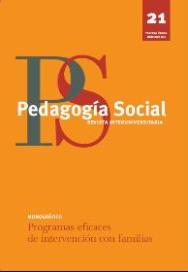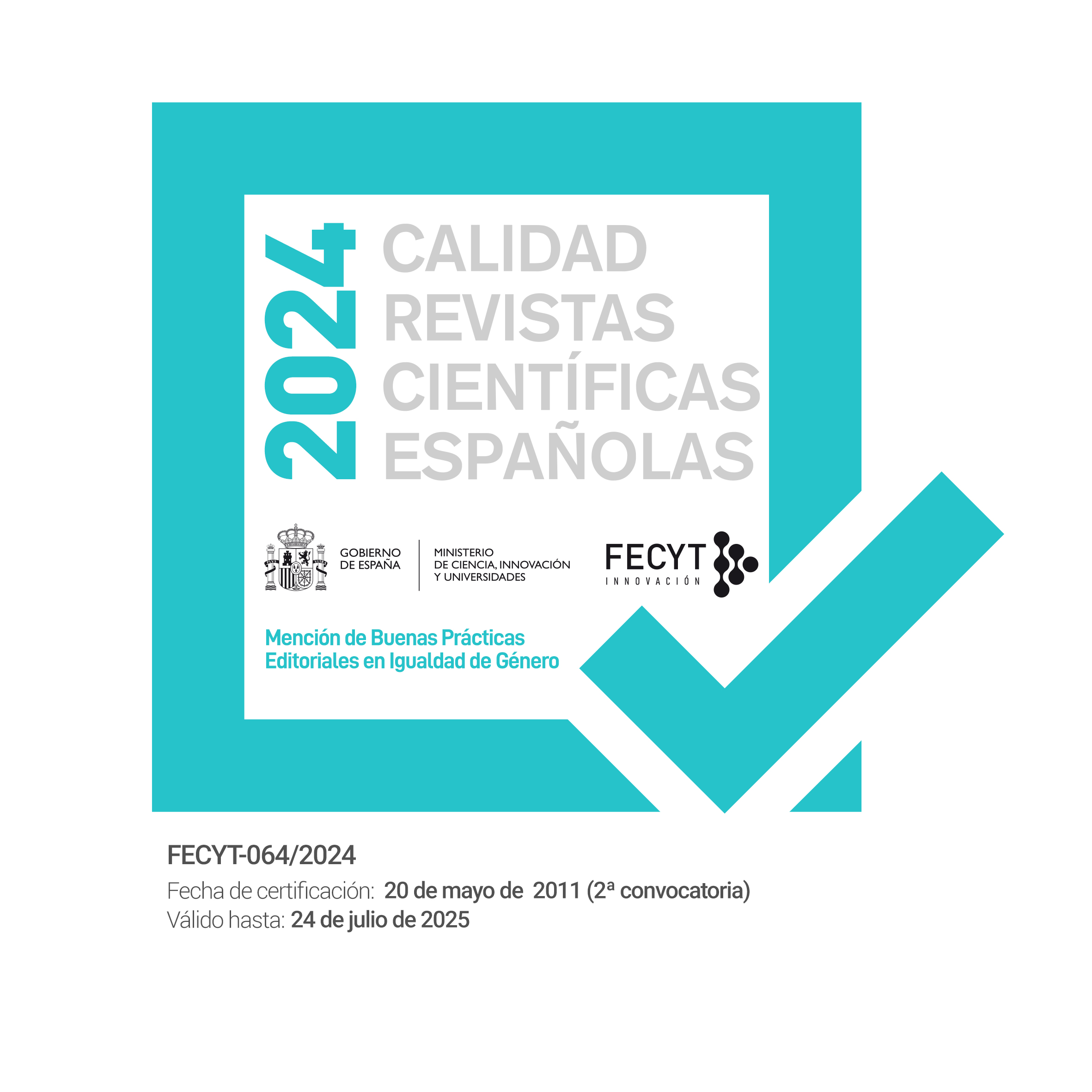The visibility of woman academics in the university
DOI:
https://doi.org/10.7179/PSRI_2013.21.09Keywords:
visibility, gender, university, teaching, research, management.Abstract
This article explores the dimensions and conditions related to the visibility of university professorsbased on their gender using a qualitativemethodology. To do so,we used threemethods of data collectioncreated by the investigative team: a semistructured interview, discussion group and document analysis.The informationwas collected from22 interviews performedwith academics fromtwo universities, two discussiongroups of 7 participants each and analysis of institutionalwebsites, gender policies and strategic projectsfor equal opportunities.Analysis of the information indicated three large categories of causes of visibility including: causes relatedto the characteristics of the female professors themselves and cultural characteristics of the environmentin which the visibility was studied and causes derived from the function developed – teaching,investigation and management.In view of the results obtained in this study it was concluded that visibility based on gender as the objectof study contributes comprehension to university functioning and to the role of gender in the professionaldevelopment of the academics. Likewise, the present article provides a starting point for futuredevelopments on this subject and a basis for promoting possible university policies and practices in the future.Downloads
References
Alberdi, I. (1985). La interiorización de los roles y la formación de los géneros en el sistema escolar: El papel de los ense-antes. En VV.AA. Primeras jornadas Mujer y Educación (pp.34-48). Madrid: Ministerio de Cultura. Instituto de la mujer.
Ardener, E (1989). The Interpretation of Ritual. London: Tavistock.
Arranz, F. (2001). Hombres y mujeres en el profesorado: un análisis de género en las académicas. En M.A. García de León y M. García de Cortázar, Profesorado universitario y género. (pp. 337-404). Madrid: Instituto de la mujer.
Bagilhole, B., & White, K. (2003). Created in their image: An analysis of male cultural hegemony in higher education in Australian and the United Kingdom. In B. Groombridge & V. Mackie (eds.). Re-searching research agendas: women, research and publication in higher education. Proceedings of the Australian Technology network-women's executive development (ATN-WEXDEV) 2003. (pp.1-12). Research Conference Perth: Curtin University of Technology Learning Support Network Brooks, A. (1997). Academic women. Buckingham: Society for Research into Higher Education Series (SRHE) and Open University Press.
Bagilhole, B. & Goode, J. (2001). The Contradiction of the Myth of Individual Merit, and the Reality of a Patriarchal Support System in Academic Careers: A Feminist Investigation. European Journal of Women's Studies, 8, 161-175.
http://dx.doi.org/10.1177/135050680100800203
Baldi, S. (1998). Normative versus social constructivist processes in the allocation of citations: A Network-Analityc model. American Sociological, 63(6), 829-46.
http://dx.doi.org/10.2307/2657504
Brooks, A. & Mackinnon, A. (2001). Gender and the Restructured University, The Society for Research into Higher Education & Open. University Press: Buckingham.
Chanana, K. (2003). Visibility, gender, and the careers of women faculty in an Indian university. Journal of Education, 38(3), 38 1 -389.
Deem, R., & Morley, L. (2006). Diversity in the academy? Staff and senior manager perceptions of equality policies in six contemporary UK higher education institutions. Policy Futures, 4(2), 185-202.
http://dx.doi.org/10.2304/pfie.2006.4.2.185
Dube, L., et al (1986). Visibility and power: Essays on women in society and development. New Delhi: Oxford University Press.
PMCid:PMC323185
Escolano, E. (2006). Entre la discriminación y el mérito: las profesoras en las universidades valencianas. València: Publicacions de la Universitat de València.
European Commission (2009): Gender Equality. Retrieved from http://ec.europa.eu/social/main.jsp?langId=en&catId=418
Fairén, S. (2003). Visibilidad y percepción del entorno. Análisis de la distribución del arte rupestre esquemático mediante sistemas de información geográfica. Alicante: Universidad de Alicante.
Hausmann, R, Tyson, L.D., & Zahidi,S. (2011). Insight Report The Global Gender Gap Report2011Global Gender Gap Report 2011. Géneva, Switzerland: World Economic Forum. Committed to improving the State of the World.
Instituto de Formación del Profesorado, Investigación e Innovación Educativa (2010). Plan de actuaciones. Madrid: MEC.
International Standard Classification On Education (Isced) (2007). Education at a Glance. Retrieved from http://stats.oecd.org/glossary/detail.asp?ID=1436
Joyner, K., & Preston, A. (1998). Gender differences in perceptions of leadership role, performance and culture in a university: A case study. International Review of Women and Leadership, 4(2), 34-43.
Lips, H. M. & Keener, E. (2007). Effects of Gender and Dominance on Leadership Emergence: Incentives Make a Difference. Sex Roles. 56 (9-10), 12-23.
http://dx.doi.org/10.1007/s11199-007-9210-8
Long, J. S. (1992). Measures of sex differences in scientific productivity. Social Force, 7, 9-17.
Park, S. M. (1996). Research, teaching and service. Why shouldn't women's work count? Journal of Higher Education, 67(1), 46-84.
http://dx.doi.org/10.2307/2943903
Raddom, A. (2002). Mothers in the Academy: positioned and positioning within discourses of the 'successful academic' and the 'good mother. Studies in Higher Education Volume 27(4), 387-403.
http://dx.doi.org/10.1080/0307507022000011516
Rincon, D. et al. (1995). Técnicas de investigación en ciencias sociales. Madrid: Dykinson.
Sáez, J., & García, A. (1997). El conocimiento de las mujeres: algunas consideraciones metodológicas. Pedagogía Social. Revista Interuniversitaria, 15-16, 23-35.
Sánchez Moreno, M. Y López Yá-ez, J. (2008). Poder y liderazgo de mujeres responsables de Instituciones Universitarias. Revista Espa-ola de Pedagogía, 240, 345-363.
Stephan, P & Levin, L. (1992). Striking the mother lode in Science. The importance of age, place and time. Oxford: Oxford University Press.
Sools, A., Van Engen, M. & Baerveldt, C. (2002). The paradox of ambition. A cultural psychological analysis of the discourse on climbing to a top position as manager in multinational Netherlands from a gender perspective. Tijdschrift voor Genderstudies, 4(2), 42–55.
Stobbe, L. (2005). Doing machismo: legitimating speech acts as a selection discourse. Gender, Work & Organization, 12, 2, 105–23.
http://dx.doi.org/10.1111/j.1468-0432.2005.00265.x
Tomás, M. Y Durán, M.M. (2009). El género y la participación en algunos órganos de gobierno en la universidad. Revista Complutense de Educación, 20(1), 151-163
Tomàs, M., Duran-Bellonch, M.M, Guillamón Ramos, C. & Lavié, J. M. (2008). Profesoras universitarias y cargos de gestión. Contextos educativos. Revista de Educación.11, 113-129.
Toutkoushian, R. K. (1994). Using citation counts for measuring sex discrimination in faculty salaries. The Review of Higher Education, 18, 61-82.
Tremblay, R. C. (1999). Inclusive administrators and development: Feminist critiques of bureaucracy. In K. Henderson, & O. P. Dwivedi, (Eds.), Alternative administration (pp. 34-46). London: McMillan.
Veale, C. & Gold, J. (1998). Smashing into the glass ceiling for women managers. Journal of Management Development, 17(1), 17–26.
http://dx.doi.org/10.1108/02621719810199527
Ward, K.; Gast, J. & Grant, L. (1992). Visibility and dissemination of women's and men's sociological scholarship. Social Problems, 39(3), 291-298.
http://dx.doi.org/10.2307/3096963
http://dx.doi.org/10.1525/sp.1992.39.3.03x0036j
Wheatley, D. & Gillings, M. (2000). Vision, perception and gist: developing enriched approaches to the study of archaeological visibility. In G. Lock (ed.), Beyond the map. Archaeology and spatial technologies (pp. 1-27). Amsterdam: NATO Science series.
Downloads
Published
How to Cite
Issue
Section
License
Copyright (c) 2014 Pedagogia Social. Revista Interuniversitaria

This work is licensed under a Creative Commons Attribution-NonCommercial 3.0 Unported License.
Copyright and right to archive
The published version of the articles can be self-archived by their authors in open access institutional and thematic repositories. However, Pedagogía Social. Revista Interuniversitaria must authorize partial or global reutilisation on new papers or publications.
Published papers must be cited including the title of the journal Pedagogía Social. Revista Interuniversitaria, issue, pages and year of publication
Ethical responsibilities
Pedagogía Social. Revista Interuniversitaria does not accept any material that has been previously published in other documents or publications. Authors are responsible for obtaining the required permissions for partial or global reproduction any material from other publications, and to correctly quote its origin.
Pedagogía Social. Revista Interuniversitaria is obliged to detect and report fraudulent practices.
Only those who have intellectually contribute to the development of the paper must appear as authors.
The journal expects authors to declare any commercial partnership that might entail a conflict of interest with respect to the submitted article.
Authors must mention in the article, preferably in the “methodology” section, that the procedures used during the samplings and controls have been made after getting informed consent.
The journal will not use any received contribution in a way other than the goals described in these guidelines.
Copyright Notice
© Pedagogía Social. Revista Interuniversitaria. Papers published in both the printed and online versions of this Journal are property of Pedagogia Social. Revista Interuniversitaria, being required to cite the source in any partial or total reproduction.
Unless otherwise stated, all content of this electronic journal is distributed under "Creative Commons Attribution-Non commercial 3.0 Spain" (CC-by-nc) license for use and distribution. The informative version and the legal text of this license is available here. This has to be expressly stated in this way when necessary.






